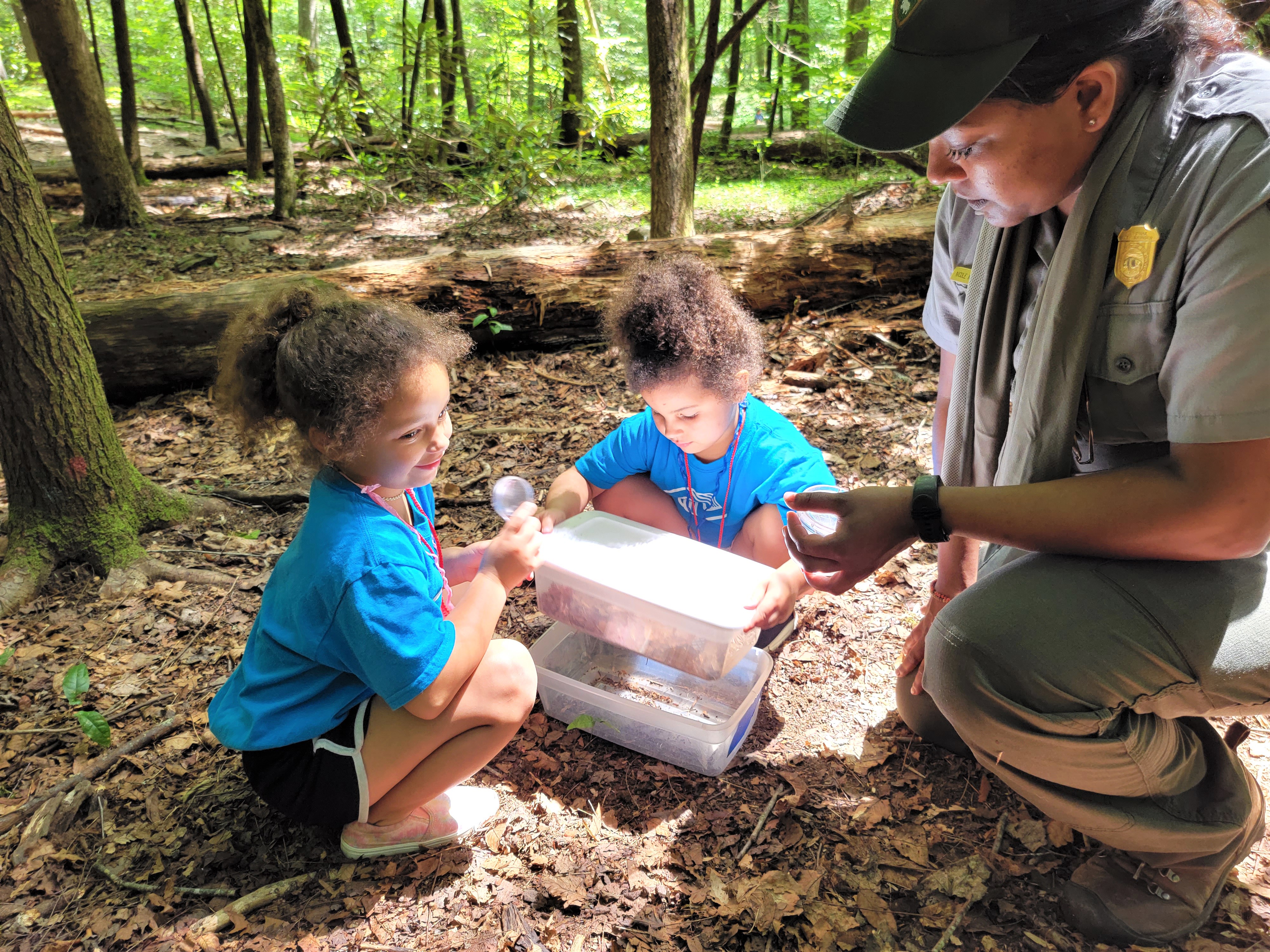The Engaged Scientist
Connect Students With Outdoor STEM Learning Opportunities Alongside Science Professionals
For young learners, an outdoor field experience can serve as the “spark” that ignites their interest in STEM and fuels an appreciation for the natural world. Hands-on field experiences serve as vital opportunities to get students outside while educating them on the local history, environment, and economy, as well as to build relationships within the learning community. Research supports how formative nature-based experiences are for young learners (Rosa and Collado 2019). Having positive experiences in nature is linked to positive environmental attitudes and behaviors. Frequent time in nature is also associated with physical and mental health benefits and the encouragement of pro-social behaviors.
Out-of-school programs provide a unique opportunity to bridge formal and non-formal education and provide valuable opportunities to introduce students to STEM. Out-of-school programs and spaces can engage students in meaningful, authentic learning situated in real-world contexts and make connections to classroom concepts. One way to enhance an out-of-school STEM program is to partner with scientists. Partnerships with STEM professionals gives students a broader view of STEM, including what it is, who does it, and where it happens (Roberts et al. 2018). These partnerships between educators, students, and scientists can be the foundation for transformational change in the learning environment and beyond.
The partnerships between out-of-school STEM programs and scientists can also form the start of a citizen science project that engages youth in collecting meaningful data related to a local issue. According to a National Academies of Sciences, Engineering, and Medicine report, Learning Through Citizen Science: Enhancing Opportunities by Design, one possible outcome of a citizen science project is enhanced community science literacy (National Academies of Sciences, Engineering, and Medicine 2018).
The National Environmental Education Foundation (NEEF) has established a partnership with the National Park Service (NPS) with support from the U.S. Department of Education to build the capacity of NPS units and 21st Century Community Learning Centers to design and deliver STEM programming. This programming partners formal and non-formal educators and engages youth from under-resourced and/or underrepresented communities in out-of-school-time, place-based citizen science and environmental monitoring. The 21st Century Community Learning Centers program is a federal program administered through state educational agencies to provide support particularly to students who attend high-poverty and low-performing schools.
The NEEF NPS-21st Century Community Learning Centers Greening STEM grantees work collaboratively to develop academic enrichment opportunities at NPS sites across the country. The lessons learned throughout this grant program thus far highlight the tremendous benefit science professionals confer through their involvement with educational programming. By connecting students with scientists, students have the opportunity to experience the outdoors through a scientific lens; learn valuable STEM skills; gain confidence, inspiration, and exposure to STEM pathways; and contribute to the collection of useful and high-quality data.
The Greening STEM Approach
NEEF’s Greening STEM model is an approach to learning that emphasizes bringing the classroom outside—whether that is on a patch of green in the schoolyard or on local public lands. Greening STEM is an experiential approach to learning that encourages authentic problem solving while making gains in environmental knowledge and engendering a stewardship ethic. The essential elements of Greening STEM include placed-based learning, three-dimensional learning, project-based learning, and community-based learning. These pillars are rooted in best practices in education and are applicable to any grade level and local context. Place-based learning uses all aspects of the local environment as the context for learning through civic engagement and participation in service projects (Clark 2008).
Three-dimensional learning speaks to the three dimensions of the Next Generation Science Standards (NGSS): disciplinary core ideas, science and engineering practices, and crosscutting concepts. The NGSS emphasizes skills and processes of science much more than previous standards, alongside more traditional content expectations.
Project-based learning engages students in real-world projects over an extended period of time (PBLworks.org), and community-based learning incorporates cultural relevance and issues of equity and justice into STEM learning. An example of the community-based learning pillar in action includes many elements of a 2022–2023 Bureau of Land Management project, Celebrate Hummingbirds/Celebra los Colibries, taking place with Team Naturaleza and Environment for the Americas in Wenatchee, Washington. The project is designed with a focus to engage Latino middle school youth in culturally grounded learning activities in Spanish and English. In addition to the bilingual aspect of the program, the project team incorporated literature and cultural stories about hummingbirds as a way to celebrate hummingbirds in Latino communities and infuse sharing history into an interdisciplinary exploration of the issue of land management on hummingbirds.
The Greening STEM model centers the local environment and community as the context for learning. For example, a recent Greening STEM project in Teaneck, New Jersey, engaged middle school students in collecting and analyzing data to create a report on the health of their local watershed for city officials. NEEF partnered with the Teaneck Creek Conservancy, Samsung, and Benjamin Franklin Middle School during the 2019–2020 school year to take students out of the classroom to explore the local watershed. The project also leveraged the expertise of local river keepers and water utility personnel to strengthen the student learning experience. Samsung funded the 2019–2020 Greening STEM demonstration project and the Bayer Foundation is supporting the expansion of Greening STEM in Teaneck Public Schools during the 2021–2023 school years.
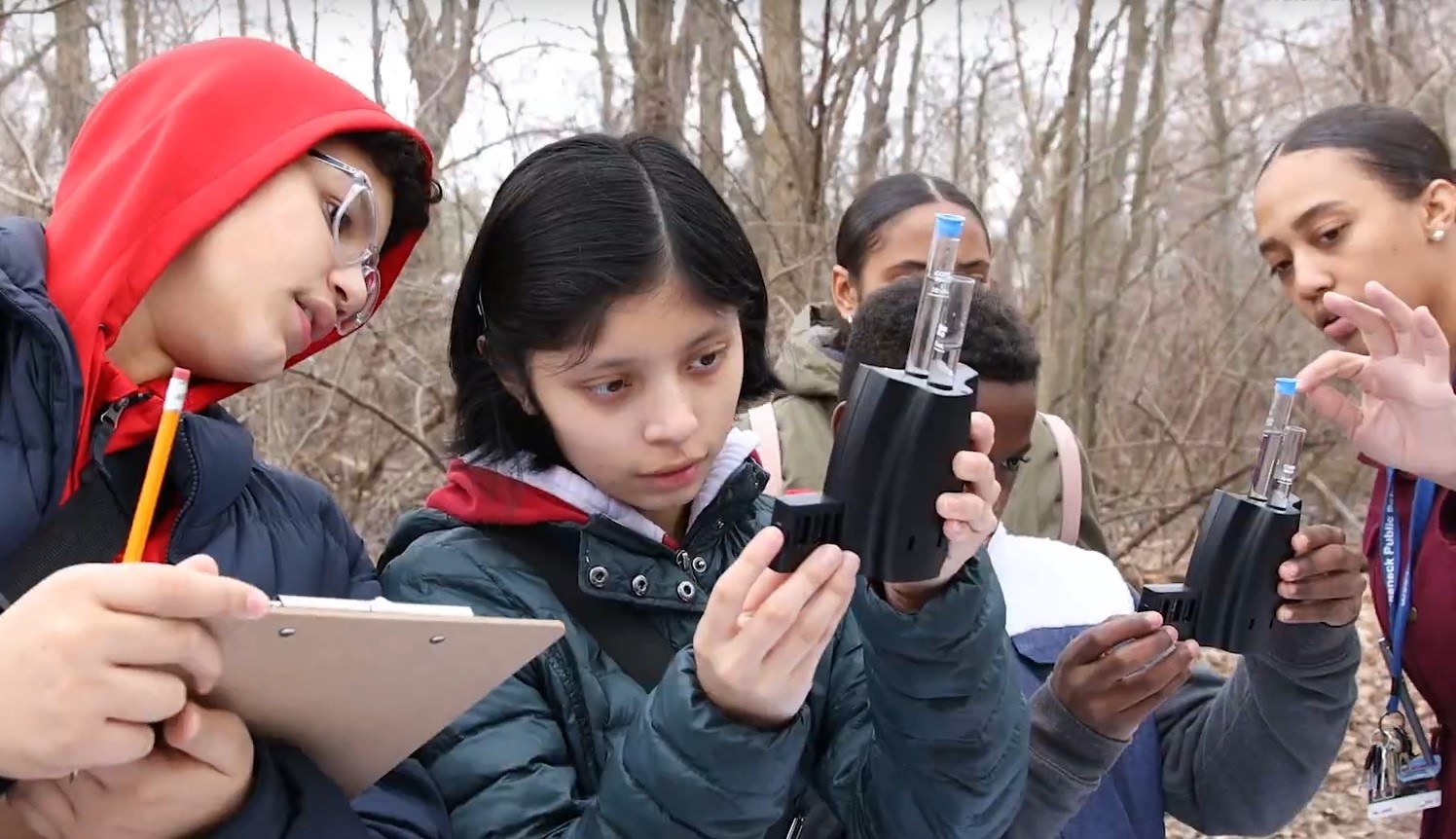
Not only were the students excited to be conducting real science outside of a traditional classroom setting, they also connected with the subject matter because it made them feel like they were making a difference in their community. This project represents the collaborative nature of Greening STEM and the value of bridging in-classroom and out-of-classroom learning with partnerships.
Educational Programming at the Great Smoky Mountains National Park
Science-based professionals add value to out-of-school-time learning programs. Great Smoky Mountains National Park’s educational programming is a great example of the numerous ways science-based professionals support and enhance STEM learning. At the park, a team of park scientists, park educators, and classroom teachers collaboratively developed a series of community science projects serving students in grades K–9. One of the park’s projects engages students from the Boys & Girls Clubs of the Tennessee Valley in STEM learning through the NEEF NPS-21st Century Community Learning Centers Greening STEM grant program.
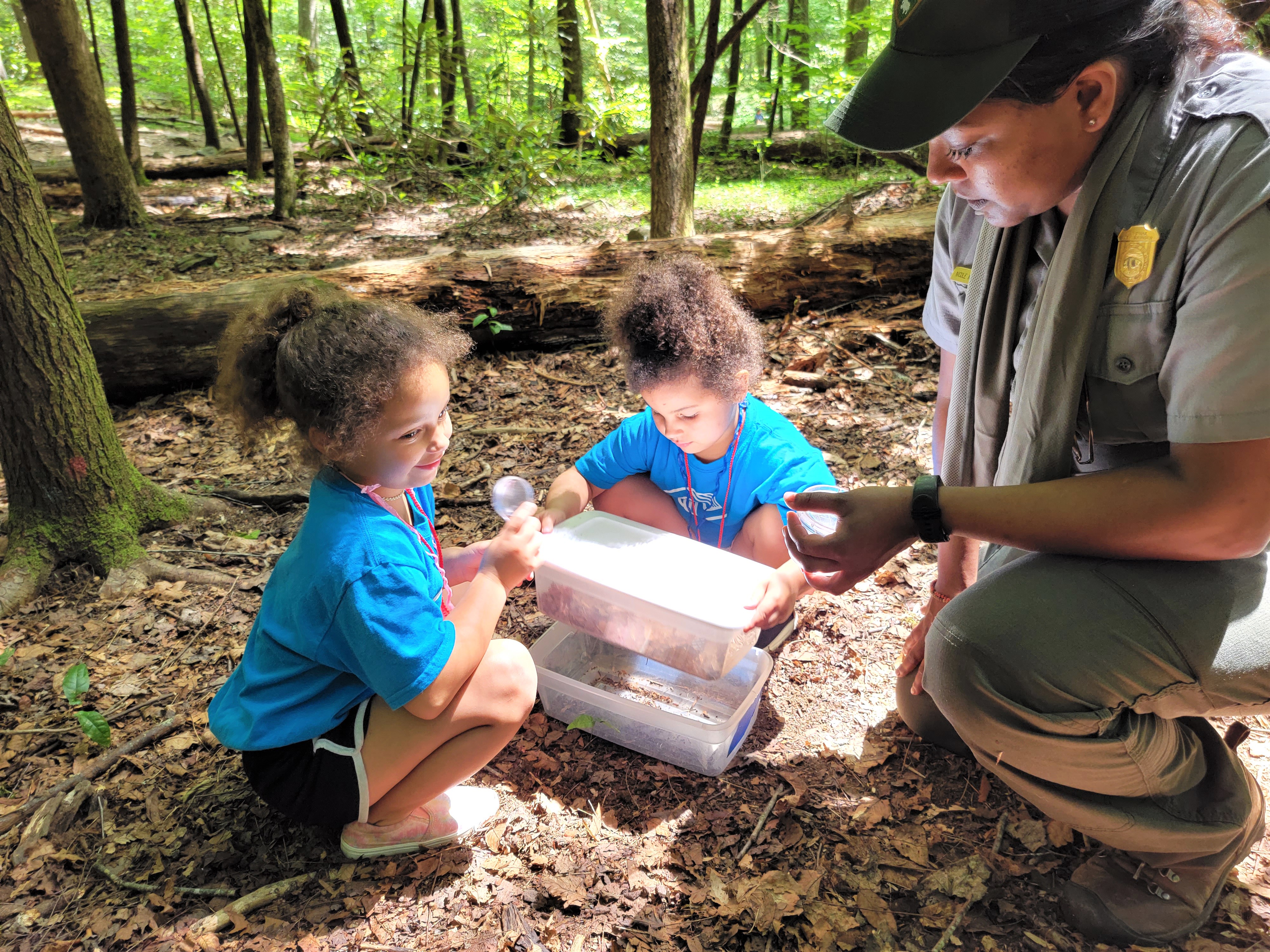
Susan Sachs, Education Branch Coordinator at the Great Smoky Mountains National Park, explains,
Science professionals can support STEM best by sharing their enthusiasm for their area of interest. Students love being in the field with professionals; learning alongside them and perhaps seeing themselves doing that same work. We especially like to amplify the work from female and BIPOC scientists so all students have an opportunity to see how they could be a scientist.
Taking inspiration from the Great Smokies team, you may discover that a local expert is willing to partner with a classroom or out-of-school program to teach about an environmental topic relevant to the community. They might be able to visit learners in the classroom as an alternative to off-campus trips and help students see themselves as future scientists. Additionally, students and scientists engaged in scientific inquiry together may lead in productive and surprising directions. Sachs shares,
Our scientists help us adapt field activities to the age while maintaining the integrity of the data collected. What has been most surprising to me is how the experiences of the students have helped inform the work of the scientists. We have had such amazing questions come from students that we bring back to the scientists. These questions have actually led to new research projects. For instance, while collecting data on the visible impacts of ground-level ozone on plants, one student asked what this damage is doing to the vitamins for a deer that might eat the plant. It was a question we didn't know the answer to and the next season, there was a research project by our scientists to analyze the nutritional value of leaves with ozone damage compared to leaves without.
Think about the positive impact of this experience on students. Not only did these students gain exposure to real science data collection techniques, learn from experts, and experience the outdoors, but their curiosity was fostered and valued. Student discourse and questioning is a key part of knowledge construction and can stimulate further interest in STEM topics (Chin and Osborne 2008). Further, engaging students in out-of-school outdoor STEM learning experiences can be an enjoyable experience and also set the stage for developing questions. As Sachs describes,
The scientific process can be fun as well as informative. We like to engage students in an actual study, but we also like to encourage them to ask their own questions. We use the prompts “I notice, I wonder, it reminds me of...” to assist with this process.
The many students that visit the Great Smoky Mountains each year and are involved in educational programming can leave with a better sense of what park scientists do and an interest to continue on a STEM pathway.
Educational Programming at Saguaro National Park
Another NEEF NPS-21st Century Community Learning Centers Greening STEM grantee, Saguaro National Park, is home to the Lost Carnivores Citizen Science + Wildlife Project. The longstanding Lost Carnivores education program engages middle and high school students in collecting scientific data by using wildlife cameras. Saguaro National Park first included citizen scientists in the project beginning in 2011–2012.
During this program students get to help and learn from park scientists studying and working to protect wildlife. Sita Stanfield, Next Generation Ranger at Saguaro National Park, explains the relationship between students and scientists involved in the project,
We explain to the students in the programs that, over time, scientists who were collecting mammal population data noticed a decreasing number of sightings of certain species. Witnessing this trend inspired the professionals to come up with a study to gain more access to data, start graphing information, and to investigate mammals through the use of camera technology. It was a great project for students to help with, and now supports the learning of many students who help conduct the same research.
The students have the opportunity to participate in meaningful data collection and to broaden their understanding of what a scientist does. As Stanfield describes,
The information that we are gathering with our student scientists teaches them about collecting evidence, which gets sent to park biologists who can analyze and interpret the data. The students learn what the professional biologists are looking for in animal population trends, relationships, and behaviors, and they learn to apply the same approach of scientific data collection to solving their own daily questions. This helps students understand how gathering and interpreting fact-based evidence can be a fun tool for them when identifying problems and approaching solutions.
The Next Generation Science Standards describe the skills, practices, and content that students should master by different age bands. The NGSS emphasize developing arguments from evidence, problem solving, and coming up with solutions. The students engaged in the Lost Carnivores education program are doing just that—learning important STEM concepts and practices in a real-world, authentic setting. What’s more, they are learning in a way that promotes the thoughtful management and protection of the Saguaro National Park wildlife.
Outcomes from the 2021–2022 Greening STEM project at Saguaro National Park include
- 72 middle school students participated in the citizen science project,
- each participant received 18 hours of engagement/instruction, and
- 6 educators and 2 volunteers participated in or led the activities.
Saguaro National Park is continuing its citizen project through the NEEF Greening STEM grant program during the 2022–2023 school year, marking the fifth year of support from NEEF and over a decade since the Lost Carnivores program began.
Stanfield further explains,
There are many benefits of engaging students in out-of-school STEM learning experiences, including allowing them to look at problems with a creative, solutions-based approach. Focusing on the need for collecting evidence to develop solutions allows students to follow their own insights and interests about what problems they want to learn more about. This student-centered learning gives them freedom to pursue science with the confidence to be self-directed and curious.
This approach is aligned with research into students’ attitudes toward STEM and how to promote STEM pathways, especially for underrepresented students. For example, the opportunity to participate in authentic STEM learning experiences plays an important role in the development of a positive STEM perception, especially for underrepresented students in STEM (Roberts et al. 2018). The Lost Carnivores education program provides these authentic opportunities for students to participate and engage in a meaningful STEM community.
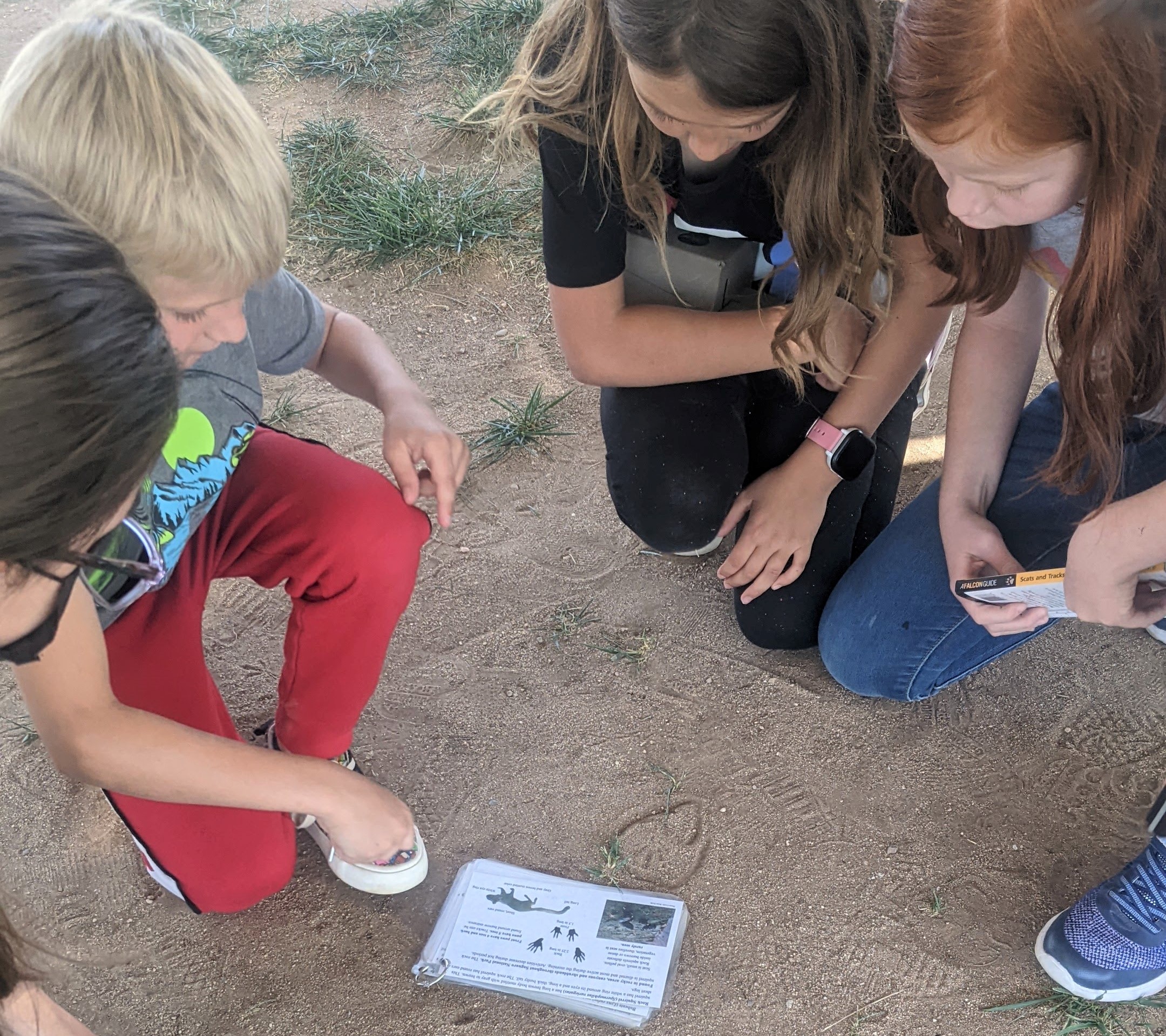
Adapting the Greening STEM model
The Great Smoky Mountains National Park and Saguaro National Park examples are affiliated with NEEF’s Greening STEM approach. Each of the examples received public or private funding that allowed the programs to either completely cover or partially offset the costs associated with launching a Greening STEM project. The approach is intended to be adaptable to specific learning contexts. Schools and parks can adapt the Greening STEM model to fit their unique circumstances and educational goals. Here are a few suggestions for how to get started:
Initiate local partnerships
When educators take stock of the expertise and connections that exist within the community, they will begin to discover potential partners for a Greening STEM project. Local experts may include personnel from public land or water management agencies, natural resource agencies, public utilities, nonprofit and community organizations, and local businesses in the STEM field.
To illustrate the diverse scientist and expert partners that can be included in a Greening STEM project, consider the types of scientists included in the NEEF Bureau of Land Management 2022–2023 Greening STEM projects: a paleontologist, Master Gardeners, park rangers, an archaeologist, tribal elders, and a wildlife biologist and ecologist. Educators can creatively brainstorm who in their community may be able to provide support through technical assistance, specialized equipment, fee waivers, donations and/or in-kind support, or access to outdoor learning spaces.
Visit nearby nature
When off-campus field trips aren’t possible, educators can transform the learning experience by using what is accessible right at the school. Perhaps there’s a patch of green on school grounds, a creek behind the building, or trees nearby that are ripe for learners to examine. No green space? Try learning about air quality and pollution instead.
Encourage students to observe the environment on school grounds and to approach natural phenomena with curiosity. Over time, this curiosity can be the foundation to develop a project-based learning unit that is relevant to local issues and connected with learning standards. Key elements of high-quality, project-based learning include factors such as authenticity and the development of a public product.
In Hawaii, a team of educators used this approach to develop a project-based learning opportunity for students that positively impacted their community. A natural resource teacher at Pearl City High School, Jessica Stoerger, partnered with the USDA Forest Service and local nonprofit organizations—with support from NEEF—to explore the health of the Waiawa watershed.
In response to pandemic impacts on the project, the team of educators offered two field trips as optional opportunities to complement virtual classroom activities. Educators prompted students to approach natural phenomena with curiosity—for instance, observing differences in forested areas with more native plants compared to areas overrun by invasive species. As a culmination of the watershed exploration, students volunteered alongside community members to build a native plant shade house, which will act as a nursery for local nonprofit organizations such as Hui o Ho`ohonua.
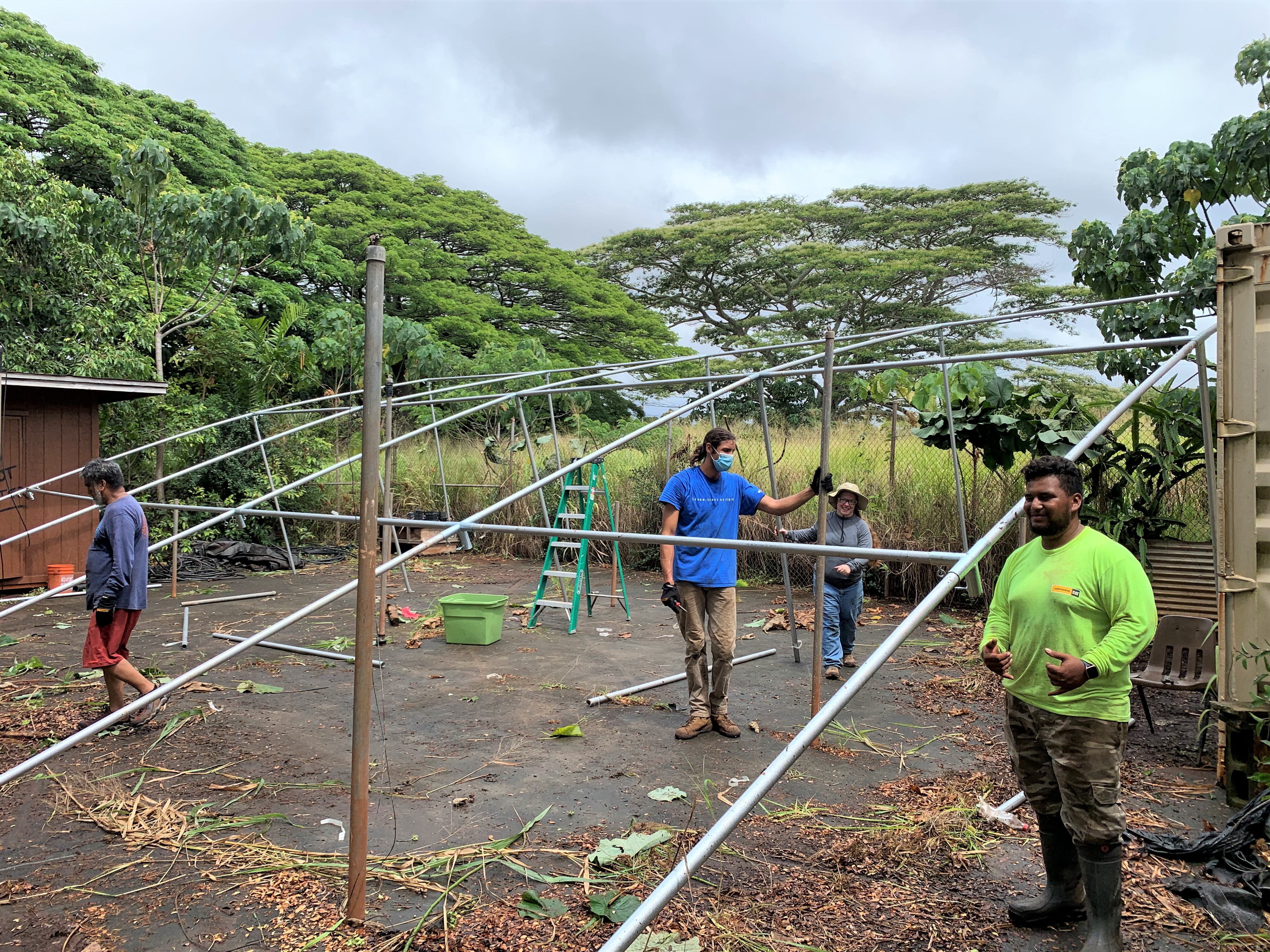
Support Nature-Based Education
In a time when school districts are facing challenge after challenge, using the environment as context for learning through the Greening STEM model can be a useful tool to pivot and reimagine what the next chapter of learning looks like. This next chapter has students using all their senses to explore the world right outside the classroom door while forging connections to the natural world and each other.
Schools do not have to take on that challenge alone. Partnerships with science-based professionals are beneficial to both educators and students. Educators can leverage the expertise of scientists and benefit from the support for taking students into the field while students gain important exposure to STEM careers and pathways.
Megan Willig is a program coordinator at the National Environmental Education Foundation, in Washington, D.C.
citation: Willig, M. 2022. Connect students with outdoor STEM learning opportunities alongside science professionals. Connected Science Learning 4 (5). https://www.nsta.org/connected-science-learning/connected-science-learning-september-october-2022/connect-students
Careers Citizen Science Environmental Science Inquiry STEM Informal Education



